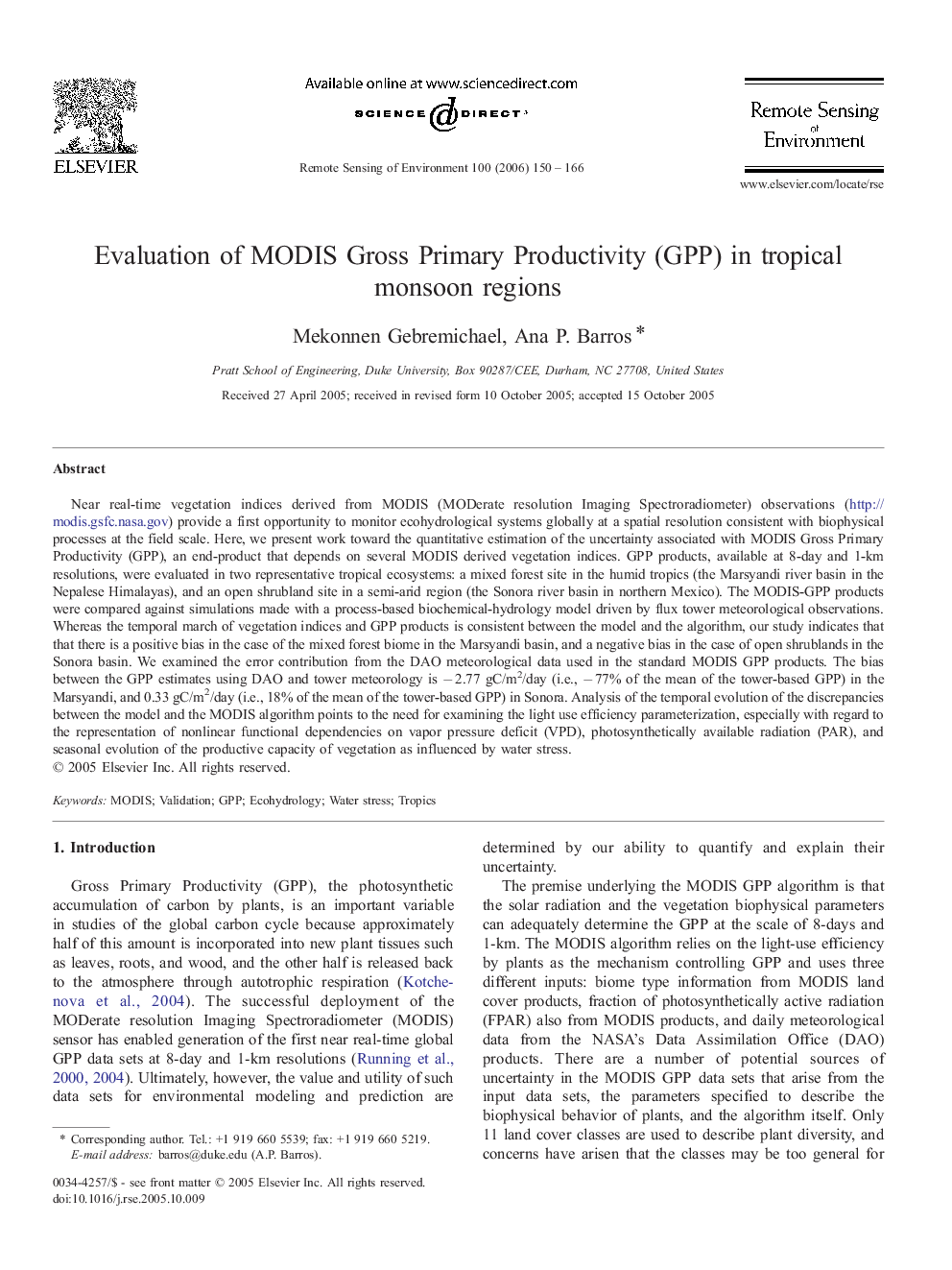| کد مقاله | کد نشریه | سال انتشار | مقاله انگلیسی | نسخه تمام متن |
|---|---|---|---|---|
| 4461177 | 1621376 | 2006 | 17 صفحه PDF | دانلود رایگان |

Near real-time vegetation indices derived from MODIS (MODerate resolution Imaging Spectroradiometer) observations (http://modis.gsfc.nasa.gov) provide a first opportunity to monitor ecohydrological systems globally at a spatial resolution consistent with biophysical processes at the field scale. Here, we present work toward the quantitative estimation of the uncertainty associated with MODIS Gross Primary Productivity (GPP), an end-product that depends on several MODIS derived vegetation indices. GPP products, available at 8-day and 1-km resolutions, were evaluated in two representative tropical ecosystems: a mixed forest site in the humid tropics (the Marsyandi river basin in the Nepalese Himalayas), and an open shrubland site in a semi-arid region (the Sonora river basin in northern Mexico). The MODIS-GPP products were compared against simulations made with a process-based biochemical-hydrology model driven by flux tower meteorological observations. Whereas the temporal march of vegetation indices and GPP products is consistent between the model and the algorithm, our study indicates that that there is a positive bias in the case of the mixed forest biome in the Marsyandi basin, and a negative bias in the case of open shrublands in the Sonora basin. We examined the error contribution from the DAO meteorological data used in the standard MODIS GPP products. The bias between the GPP estimates using DAO and tower meteorology is − 2.77 gC/m2/day (i.e., − 77% of the mean of the tower-based GPP) in the Marsyandi, and 0.33 gC/m2/day (i.e., 18% of the mean of the tower-based GPP) in Sonora. Analysis of the temporal evolution of the discrepancies between the model and the MODIS algorithm points to the need for examining the light use efficiency parameterization, especially with regard to the representation of nonlinear functional dependencies on vapor pressure deficit (VPD), photosynthetically available radiation (PAR), and seasonal evolution of the productive capacity of vegetation as influenced by water stress.
Journal: Remote Sensing of Environment - Volume 100, Issue 2, 30 January 2006, Pages 150–166